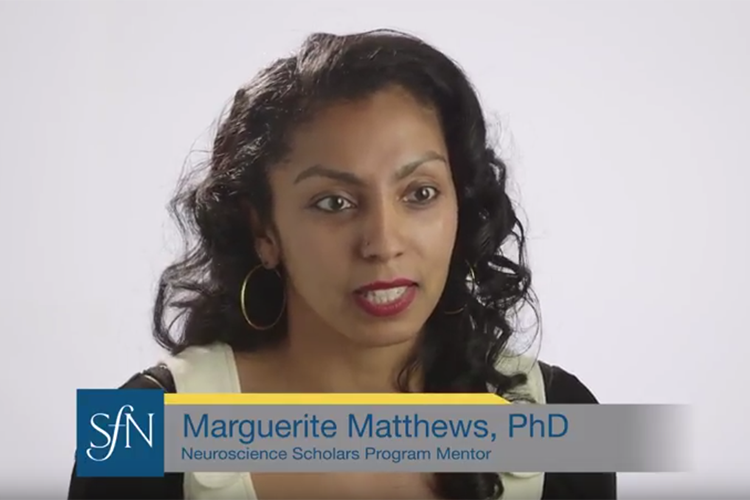
Neuroscience 2016: Connecting With Colleagues and Great Science
More than 30,000 people gathered in the San Diego Convention Center in November for the world’s largest meeting focused on scientific discovery related to the brain and nervous system. Neuroscience 2016, SfN's 46th annual meeting, brought together neuroscientists from around the globe to share their research discoveries, network with colleagues, and enhance their professional skills.
The meeting “has been a really great networking opportunity,” said SfN member Lorraine Horwitz, a graduate student at the University of Michigan. “This is my first neuroscience conference, so I really enjoyed not only meeting new neuroscientists and talking about science in general, but also knowing that when I leave this conference, I’ll have a really good opportunity to continue to have these interactions and to be a part of something bigger: the neuroscience community.”
Meeting highlights
- More than 15,000 abstracts
- 557 exhibitors
- 850 scientific sessions
- 15 professional development workshops
- 9 press conferences involving 38 neuroscientists
Attendees had the opportunity to gain a deeper understanding of a wealth of scientific subjects across the breadth of the field. The scientific presentations relayed important new research about brain structure and health, as well as breakthroughs about diseases and possible treatments.
“I love going to SfN’s annual meeting because it gives you a bird’s eye view of the field, and you can see all of the new roads and buildings being constructed, so that when you fly home to your nest you’re inspired to work on the most exciting research,” said SfN member Elise Piazza, a postdoc at the Princeton Neuroscience Institute.
The scientific lectures included diverse subjects such as auditory circuits, forensic science, quantal release, sensorimotor circuits in the spinal cord, immune responses to neurodegenerative disease, mosquito attraction to humans, vocal communication in songbirds and mice, and a wealth of other topics.
“Learning Across the Lifespan” was the theme for this year’s Presidential Special Lecture Series, which featured the following speakers:
- Lynne Kiorpes, PhD, “Limitations on Visual Development: Neurons and Behavior"
- Frances E. Jensen, MD, “Neurobiology of the Adolescent and Young Adult Brain Reveals Unique Strengths and Vulnerabilities: Debunking Myths”
- Ann-Shyn Chiang, PhD, “Toward Whole-body Connectome in Drosophila”
- Sarah M.N. Woolley, PhD, “Tuning Auditory Circuits for Vocal Communication”
In the Dialogues Between Neuroscience and Society lecture, Global Mental Health and Neuroscience: Challenges and Opportunities, Shekhar Saxena, director of the Department of Mental Health and Substance Abuse at the World Health Organization, discussed how a closer collaboration between mental health and neuroscience could enhance knowledge and improve population health.
He explained the impact of mental disorders and stressed that an interdisciplinary approach is necessary. “We need to look at mental, neurological, and substance use disorders within the same domain. Within the research field there are segregations, but this is the dialogue we need to promote, to deal with [these disorders] in a holistic way,” Saxena said.
In addition to the lectures, hundreds of researchers shared details about their work in poster presentations in the main hall, while exhibitors displayed the latest scientific products and publications, offering demonstrations and samples.
“This is a great meeting where all the people from different fields come together, and you get amazing feedback about your work,” said Sulagna Das of the Albert Einstein College of Medicine. “It has also been a great learning experience.”
Hundreds of neuroscientists at all career levels took advantage of the meeting’s professional development workshops, which provided guidance on subjects ranging from networking to getting research published in journals, to big data in science. Recordings of the Neuroscience 2016 professional development workshops will be made available to SfN members on Neuronline.
In addition, Neuroscience 2016 drew the interest of more than 230 members of the media, resulting in robust coverage of new science coming out of the meeting in publications such as NPR, Nature, Science News, and Scientific American. Specifically, Neuroscience 2016 featured nine press conferences with 38 researchers presenting intriguing findings on an array of topics including Zika, new technologies, Alzheimer’s and Parkinson’s diseases, autism, and sensory experiences.
Join us for Neuroscience 2017, November 11-15 in Washington, DC!



















